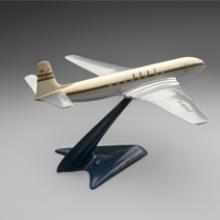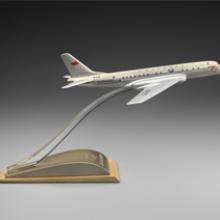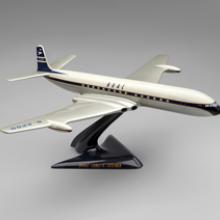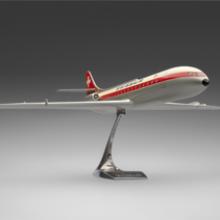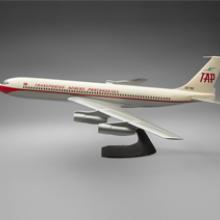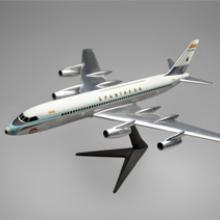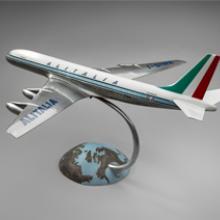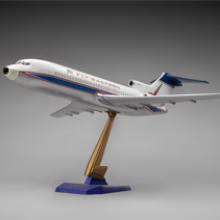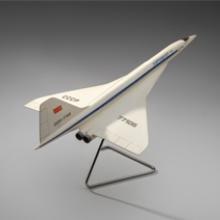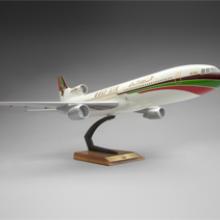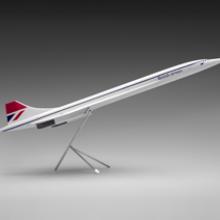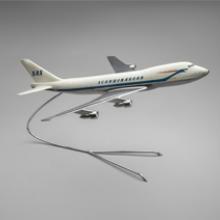Jet Age Models: from the Collection of Anthony J. Lawler
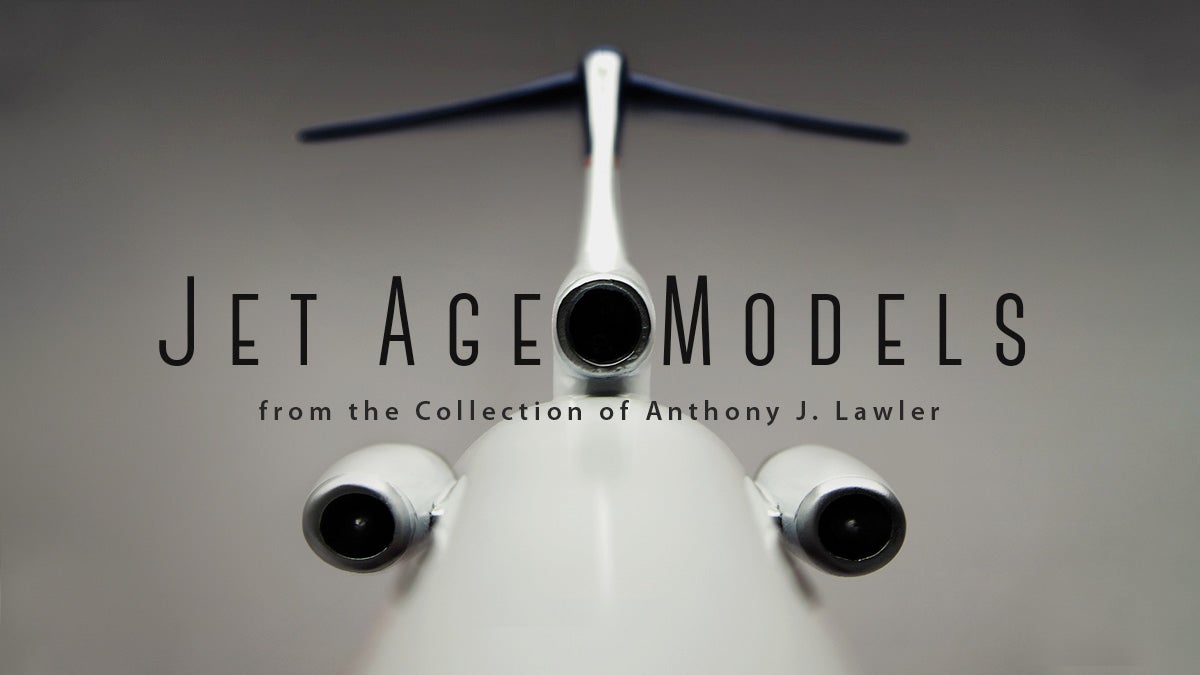
International Terminal
Jet Age Models: from the Collection of Anthony J. Lawler
For nearly half a century, from the time of the first successful flight of the Wright brothers in 1903, the predominant form of aircraft propulsion had been propellers driven by piston engines. Jet engines were initially conceived in the early twentieth century, but were not put into practical use in aircraft until World War II and were not installed on commercial airliners until the late 1940s. These first applications were turboprops or propellers attached through a gearbox to the turbine of a jet engine. In 1952, BOAC (British Overseas Airways Corporation) introduced the de Havilland Aircraft Company’s Comet, the first commercial pure-turbojet, and the fastest airliner in the world at the time. Six years later, an improved Comet and other jetliners from Boeing, Sud Aviation, and Douglas Aircraft emerged. Not only were these jets capable of high velocities, but they also enabled the airlines to substantially reduce their seat-mile costs, and thus lower ticket prices and open up air travel to a large percentage of the public. The jet age of commercial aviation had effectively arrived.
When these new airliners were introduced they were celebrated as one of the greatest advances in commercial aviation, and were promoted with great enthusiasm during the 1950s and 1960s. Producing scale models of these jetliners was an effective means for airlines to promote the new aircraft, and for manufacturers, an important part of the design, production, and marketing process. Crafted by in-house model shops or through independent model makers, they represented the new aircraft designs in miniature for convenient three-dimensional viewing and analysis. Accurately painted livery schemes on the models helped the airlines to imagine the new, swift jets operating within their fleets, and carriers distributed the models to their sales offices and travel agents for proud display.
The models exhibited here represent the first three decades of the jet age of commercial aviation, from the early 1950s until the introduction of supersonic transports and wide-body, jumbo-jets in the late 1970s. All models are from the collection of Anthony J. Lawler, an aviation industry professional and avid airliner model collector since first seeing the de Havilland Comet fly over his boyhood home in Rhodesia 1952. Mr. Lawler has spent decades assembling his collection of scale airliner display models, most of which were acquired while working as a senior sales representative for Airbus North America during the 1980s and 1990s. His collection spans almost a century of commercial aviation design innovation.
©2015 by the San Francisco Airport Commission. All rights reserved.
